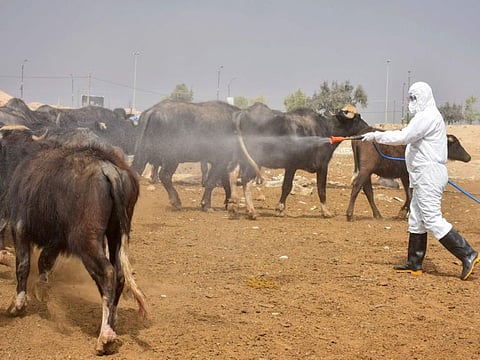Pakistan’s first Congo virus death of 2025 recorded in Karachi
Common symptoms of Congo virus include fever, muscle aches, vomiting and abdominal pain

Dubai: A 42-year old man has died in Karachi after contracting Congo virus, according to reports from the provincial health department. It is the first time this year that a fatality caused by the virus has occurred in the Sindh region.
The patient was admitted to a local hospital a day prior, and had no history of travel, pointing to signs of local disease transmission. Aside from this case, the disease has and continues to affect many others nationwide.
But what makes the country so susceptible to the virus in the first place?
Congo virus in Pakistan
Congo virus has affected Pakistan for nearly 50 years after it was first discovered in Rawalpindi in 1976. Since then the disease has been endemic in the country, with outbreaks typically spiking in the summer months every year. The country’s tropical weather serves as an ample habitat for ticks, one of the primary sources of the virus.
Also Read: Deadly Congo Virus spreads panic in Karachi
Another major cause of the disease is contact with infected animal blood or tissue. In this case, the risk of Congo virus increases dramatically every year when Eid Al Adha comes around, as the religious holiday is largely centred around the sacrificing of animals (mostly cattle). It leads to increased contact with animals, often without prioritising hygiene protection or adequate health procedures. In fact, when it comes to Congo virus, the World Health Organisation particularly advises caution during the slaughtering of animals.
Aside from Karachi, one earlier case of a Congo virus related fatality was reported in Quetta in April, 2025.
What is Congo virus?
The disease is officially known as Crimean-Congo haemorrhagic fever, but where does this name come from? As it was first discovered in the Crimean Peninsula in 1944, shortly followed by a discovery in Congo in 1956, the two locations became infamous to the disease. The haemorrhagic fever part of the name describes the type of illness patients endure. In this case, it is a fever often formed by viral infections that can cause inference with blood vessels in the body.
Symptoms
Some of the most common symptoms for Congo virus include fever, muscle aches, headaches, sore eyes, vomiting, and abdominal pain. This is often accompanied by mood swings and confusion. Given that these symptoms are similar to that of flu and common colds, diagnosis for Congo virus usually involves laboratory tests like real-time polymerase chain reaction tests (RT-PCR).
Preventive measures
In terms of preventive measures, no vaccines exist for Congo virus for either people or animals. In lieu of this, Pakistan’s National Institute of Health has listed some of the following ways to reduce risk of infection.
Wear protective clothing (such as long sleeves, light colored clothing, and even gloves if handling animals)
Use approved acaricides on clothing and insect repellent on skin
Avoid visiting areas where ticks are abundant and seasons where they are most active.
Quarantine animals before they enter slaughterhouses
Inject Ivermectin to animals with ticks, 24-30 days before slaughtering.
Mariam Khan is a trainee journalist at Gulf News
Sign up for the Daily Briefing
Get the latest news and updates straight to your inbox



